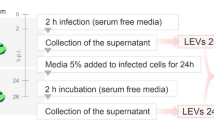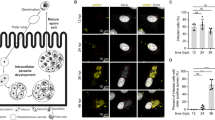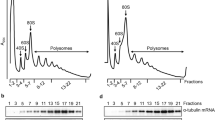Abstract
Globally, Giardia is one of the major cause of diarrheal illnesses and rapid diagnostic methods differentiating infectious cysts are critical for developing intervention strategies through contaminated surfaces, food and water. This is currently hampered by lack of an in vitro model. We evaluated mRNA expression in trophozoites and their attachment to a CaCo2 (C2bb) cell monolayer and changes in trans-cellular resistance as an indicator of Giardia viability and infectivity. Heat shock mRNA in Giardia cysts and variant specific protein (VSP) mRNA in trophozoites were quantified by RT-PCR. When compared with neonatal mice infectivity, the attachment of trophozoites to cell monolayers, expression of VSP, and changes in the trans-cellular resistance, the infectivity directly correlated with infectivity in neonatal mice. This study highlights the use of a molecular method combined with electrophysiological analysis of cell culture (ECC-rtPCR) post-trophozoite’s attachment for assessing viability and infectivity of environmental isolates of Giardial cysts.
Similar content being viewed by others
Article PDF
Author information
Authors and Affiliations
Corresponding author
Rights and permissions
About this article
Cite this article
Ijaz, M., Alum, A., Sbai, B. et al. Development and comparison of ECC-rtPCR with in vivo method to determine the viability and infectivity of Giardial cysts. Nat Prec (2011). https://doi.org/10.1038/npre.2011.5501.1
Received:
Accepted:
Published:
DOI: https://doi.org/10.1038/npre.2011.5501.1



